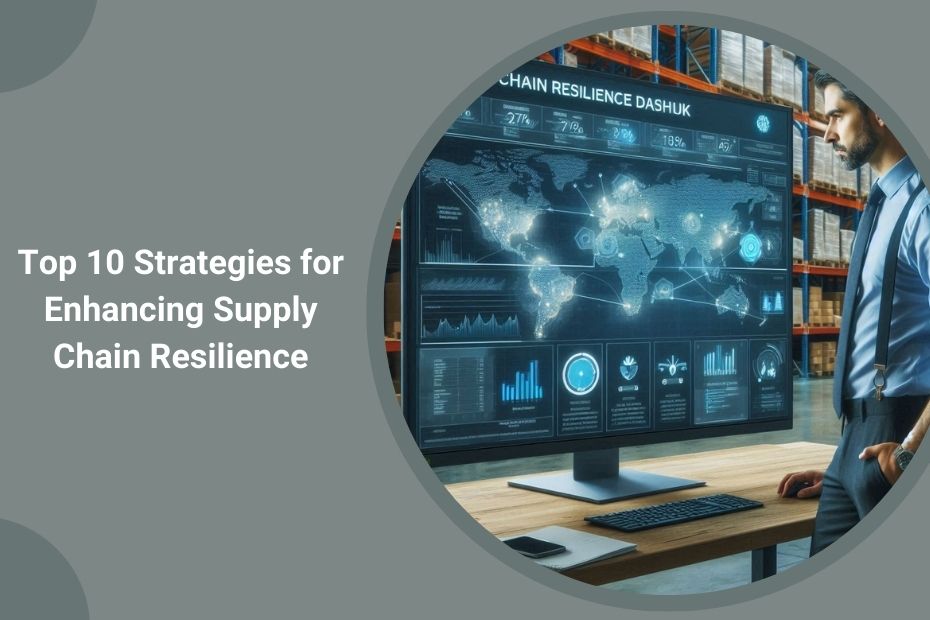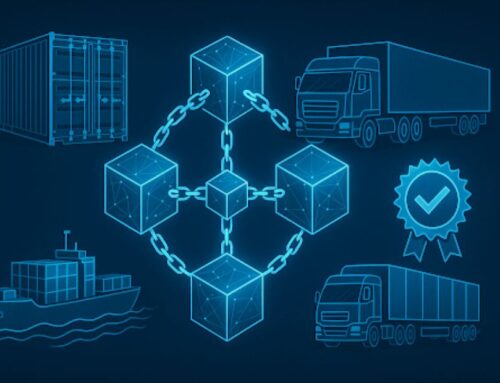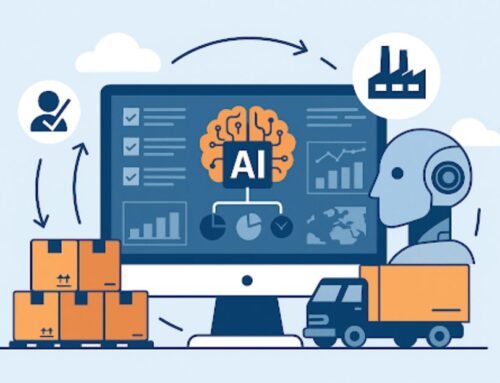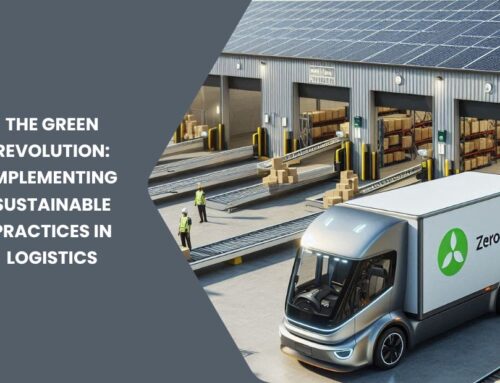Supply chains don’t collapse all at once. They crack in quiet places—delays, shortages, miscommunication—until something snaps. I’ve seen how fragile a global operation can be when the right fail-safes aren’t in place. At this point, resilience isn’t just about bouncing back. It’s about being ready—always. Whether it’s a supplier going offline, a border closure, or a cyberattack, the question is never “if,” it’s “when.” I build resilience into my operations through practical strategies that minimize risk, shorten recovery time, and give my team room to maneuver when everything shifts. These are the ten strategies I rely on most.
1. Diversify the Supplier Base Without Complicating Procurement
Depending on a single supplier or region is one of the most common risks I see—and it’s often hidden until something breaks. I work with companies that used to source 90% of critical components from one country. When political tensions or natural disasters hit, production stopped dead. That kind of exposure turns into a crisis fast. Spreading that risk across a few carefully selected partners in different regions gives me options. I always want at least two qualified sources for every high-impact material.
But I don’t just add suppliers for the sake of diversification. Each one goes through the same qualification process, including lead time analysis, quality track record, and logistics stability. We also run scenario tests to see how quickly volume can shift between them. Diversification doesn’t mean complexity—it means control. I’m not looking to manage ten vendors. I’m looking to manage risk with two or three solid ones I can count on.
2. Forecast Accurately Using AI, Not Guesswork
Traditional forecasting tools gave me decent historical patterns, but they never warned me about real-time shifts. I’ve switched to AI-driven platforms that pull data from POS systems, eCommerce traffic, market signals, and weather. This setup lets me respond early to demand shifts, not just react when it’s too late. With AI, I’ve closed the gap between projected and actual demand more than any manual model ever could.
The added bonus is speed. When inventory accuracy matters by the hour, AI gives me daily refreshes on trends, not just monthly updates. That’s how we catch promotions running hotter than expected or spot slowdowns before inventory backs up. Planning teams using these tools don’t waste time cleaning spreadsheets—they focus on the decisions that actually prevent shortages or overstock.
3. Use Strategic Buffers—Without Bloated Inventory
I’m not a fan of carrying excess inventory, but I’ve learned where and when to keep strategic safety stock. A buffer can buy time when a supplier misses a shipment or a transport lane closes unexpectedly. I use modeling tools to identify which parts are worth buffering. It’s rarely about holding more—it’s about holding smarter. That means looking at item criticality, supplier reliability, and lead time variability.
The goal is to avoid a total stop in production without tying up too much capital in warehousing. I’ve found that small increases in safety stock on high-risk components often yield huge savings when you consider the cost of a shutdown. This isn’t about hoarding inventory. It’s about identifying the right pressure points in the supply chain and placing insurance exactly where it’s needed.
4. Build End-to-End Visibility With Systems That Actually Talk
Seeing what’s happening across the entire supply chain isn’t a luxury anymore. I work with systems that integrate transportation management, warehouse operations, supplier milestones, and real-time tracking. That visibility lets me know if a shipment is stuck at port before it causes downstream issues. It also helps identify weak links across tier-two or tier-three suppliers.
I’ve seen the difference when systems are fully connected. We’ve re-routed in-transit shipments mid-ocean, redirected inbound inventory to less congested ports, and prioritized unloading based on customer orders—all because we had real-time, actionable data. Dashboards mean nothing if the data’s late. Real visibility means I can act today, not explain delays next week.
5. Treat Supplier Relationships Like Strategic Assets
I’ve seen supply chain teams spend months negotiating contracts but never speak to the supplier again until something breaks. That approach never works. I stay in regular contact with key suppliers, not just during quarterly reviews. I share forecasts, talk through capacity changes, and keep communication open. When things go wrong—and they will—I want to be the customer that gets a call early, not the one chasing answers after it’s too late.
These relationships also help during shortages. I’ve secured limited materials or priority production slots because of mutual trust, not price. Strong supplier relationships aren’t soft skills—they’re critical risk management tools. And they pay off when you need flexibility, speed, or special attention during a disruption.
6. Design Flexibility Into Manufacturing and Distribution
Fixed production lines and static processes are great—until they’re not. When a key material runs short or demand shifts unexpectedly, flexibility makes all the difference. I work with teams to make production lines multi-use where possible and train workers to shift between products. We’ve also designed workflows that can absorb changes in packaging, labeling, and configuration on short notice.
In one case, a critical component was delayed for weeks. We pivoted to an alternate design and kept the line running by adjusting specs. That level of agility only works when teams are used to change. It’s not just about equipment—it’s about mindset. I train teams to expect change and give them tools to adjust without starting from scratch every time.
7. Make Risk Management a Living, Breathing Process
Risk management plans don’t belong in a binder—they belong in weekly meetings. I track geopolitical events, supplier issues, port congestion, and financial risks like currency shifts in a live system. Our team maps risks by severity and likelihood, then regularly pressure-tests mitigation strategies. If something happens tomorrow, we already know what step one looks like.
We don’t wait for a disaster to build response plans. We simulate disruptions and document playbooks in advance. From cyberattacks to regional shortages, we’ve run drills that help us respond faster. The biggest win here is alignment. Everyone knows the plan. When disruption hits, people aren’t guessing—they’re executing.
8. Use Simulation and Digital Twins for Real Decisions
I use digital twin technology to model how changes affect the entire network. Adding a warehouse? Shifting manufacturing from Asia to Mexico? Increasing lead time buffers? I run those simulations before we make the move. These tools let me test assumptions without putting real orders at risk.
In one scenario, we needed to know if breaking shipments across multiple ports would delay our delivery promises. The simulation showed a slight cost increase but a major gain in reliability. We moved forward, and the results lined up almost exactly. That kind of confidence in planning only comes from seeing the whole picture before you commit resources.
9. Take Cybersecurity Seriously—It’s a Supply Chain Issue
I’ve seen operations grind to a halt because of malware on warehouse systems. It wasn’t even our system—it was a 3PL partner. That taught me quickly: cybersecurity is not an IT problem—it’s a supply chain risk. I now work with IT to ensure supplier systems are audited and access to internal tools is tightly controlled.
We’ve also created manual fallback procedures. If our WMS or TMS goes down, we can still process orders, schedule trucks, and handle dock traffic without scrambling. Cyber disruptions move fast. If you’re not ready before they hit, you’re already too late.
10. Build a Culture That Trains for Disruption, Not Just Routine
Resilient supply chains aren’t built in crisis—they’re built in daily operations. I reward teams for identifying weak spots and proposing fixes. When something breaks, we treat it like a learning opportunity. Post-disruption reviews happen within 48 hours, and any proposed changes are tracked until they’re closed. That loop builds confidence and accountability.
People need to be trained to expect change. I make resilience part of onboarding, training, and team goals. Everyone from warehouse staff to planners understands how their work connects to our ability to stay running. That mindset—combined with the right tools—turns a reactive operation into one that stays calm when the unexpected hits.
Most Searched Supply Chain Resilience Tips
- Use multiple suppliers to reduce risk
- Add safety stock where it counts
- Use real-time data and forecasting tools
- Run scenario simulations before making big changes
- Build supplier trust and regular communication
In Conclusion
Supply chain resilience isn’t a checklist—it’s a way of working. I’ve seen too many operations depend on luck and scramble through every disruption. That doesn’t work anymore. I use these strategies because they’ve helped keep products moving, customers satisfied, and teams focused under pressure. Whether I’m dealing with shipping delays, raw material shortages, or digital threats, the systems I’ve built are designed to bend—not break. Resilience is about readiness, and in supply chain management, readiness is everything.
Discover more insights on supply chain resilience and operations strategy from Facebook, where thought leadership meets real-world experience.









